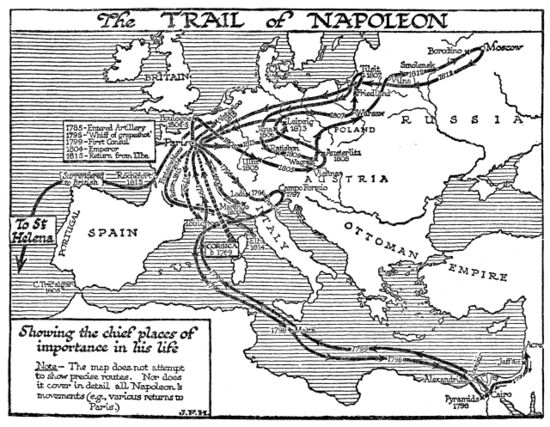imported>Chunbum Park |
imported>John Stephenson |
| (216 intermediate revisions by 8 users not shown) |
| Line 1: |
Line 1: |
| In electronics, the '''[[Miller effect]]''' is the increase in the equivalent input capacitance of an inverting voltage [[amplifier]] due to a capacitance connected between two gain-related nodes, one on the input side of an amplifier and the other the output side. The amplified input capacitance due to the Miller effect, called the '''Miller capacitance''' ''C<sub>M</sub>'', is given by
| | {{:{{FeaturedArticleTitle}}}} |
| :<math>C_{M}=C (1-A)\ ,</math>
| | <small> |
| where ''A'' is the voltage gain between the two nodes at either end of the coupling capacitance, which is a negative number because the amplifier is ''inverting'', and ''C'' is the coupling capacitance.
| | ==Footnotes== |
| | | {{reflist|2}} |
| Although the term ''Miller effect'' normally refers to capacitance, the Miller effect applies to any impedance connected between two nodes exhibiting gain. These properties of the Miller effect are generalized in '''Miller's theorem'''.
| | </small> |
| | |
| === History ===
| |
| The Miller effect is named after John Milton Miller. When Miller published his work in 1920, he was working on vacuum tube triodes, however the same theory applies to more modern devices such as bipolar transistors and MOSFETs.
| |
| | |
| === Derivation ===
| |
| {{Image|Miller effect.PNG|right|350px|These two circuits are equivalent. Arrows indicate current flow. Notice the polarity of the dependent voltage source is flipped, to correspond with an ''inverting'' amplifier.}} | |
| Consider a voltage amplifier of gain −''A'' with an impedance ''Z<sub>μ</sub>'' connected between its input and output stages. The input signal is provided by a Thévenin voltage source representing the driving stage. The voltage at the input end (node 1) of the coupling impedance is ''v<sub>1</sub>'', and at the output end −''Av<sub>1</sub>''. The current through ''Z<sub>μ</sub>'' according to Ohm's law is given by:
| |
| | |
| :<math>i_Z = \frac{v_1 - (- A)v_1}{Z_\mu} = \frac{v_1}{ Z_\mu / (1+A)}</math>.
| |
| | |
| The input current is:
| |
| | |
| :<math>i_1 = i_Z+\frac{v_1}{Z_{11}} \ . </math>
| |
| | |
| The impedance of the circuit at node 1 is:
| |
| | |
| :<math>\frac {1}{Z_{1}} = \frac {i_1} {v_1} = \frac {1+A}{Z_\mu} +\frac{1}{Z_{11}} .</math>
| |
| | |
| This same input impedance is found if the input stage simply is decoupled from the output stage, and the reduced impedance ''{{nowrap|Z<sub>μ</sub> / (1+A)}}'' is substituted in parallel with ''Z<sub>11</sub>''. Of course, if the input stage is decoupled, no current reaches the output stage. To fix that problem, a dependent current source is attached to the second stage to provide the correct current to the output circuit, as shown in the lower figure. This decoupling scenario is the basis for ''Miller's theorem'', which replaces the current source on the output side by addition of a shunt impedance in the output circuit that draws the same current. The striking prediction that a coupling impedance ''Z<sub>μ</sub>'' reduces input impedance by an amount equivalent to shunting the input with the reduced impedance ''{{nowrap|Z<sub>μ</sub> / (1+A)}}'' is called the ''Miller effect''.
| |
| | |
| [[Miller effect|....]]
| |
Latest revision as of 10:19, 11 September 2020
Napoleon (Napoleon Bonaparte or, after 1804, Napoleon I, Emperor of the French) was a world historic figure and dictator of France from 1799 to 1814. He was the greatest general of his age--perhaps any age, with a sure command of battlefield tactics and campaign strategies, As a civil leader he played a major role in the French Revolution, then ended it when he became dictator in 1799 and Emperor of France in 1804 He modernized the French military, fiscal, political legal and religious systems. He fought an unending series of wars against Britain with a complex, ever-changing coalition of European nations on both sides. Refusing to compromise after his immense defeat in Russia in 1812, he was overwhelmed by a coalition of enemies and abdicated in 1814. In 1815 he returned from exile, took control of France, built a new army, and in 100 days almost succeeded--but was defeated at Waterloo and exiled to a remote island. His image and memory are central to French national identity, but he is despised by the British and Russians and is a controversial figure in Germany and elsewhere in Europe.
Rise to Power
Once the Revolution had begun, so many of the aristocratic officers turned against the Revolutionary government, or were exiled or executed, that a vacuum of senior leadership resulted. Promotions came very quickly now, and loyalty to the Revolution was as important as technical skill; Napoleon had both. His demerits were overlooked as he was twice reinstated, promoted, and allowed to collect his back pay. Paris knew him as an intellectual soldier deeply involved in politics. His first test of military genius came at Toulon in 1793, where the British had seized this key port. Napoleon, an acting Lieutenant-Colonel, used his artillery to force the British to abandon the city. He was immediately promoted by the Jacobin radicals under Robespierre to brigadier-general, joining the ranks of several brilliant young generals. He played a major role in defending Paris itself from counter-revolutionaries, and became the operational planner for the Army of Italy and planned two successful attacks in April 1794. He married Josephine (Rose de Beauharnais) in 1796, after falling violently in love with the older aristocratic widow.[1]
- ↑ Englund pp 63-73, 91-2, 97-8
